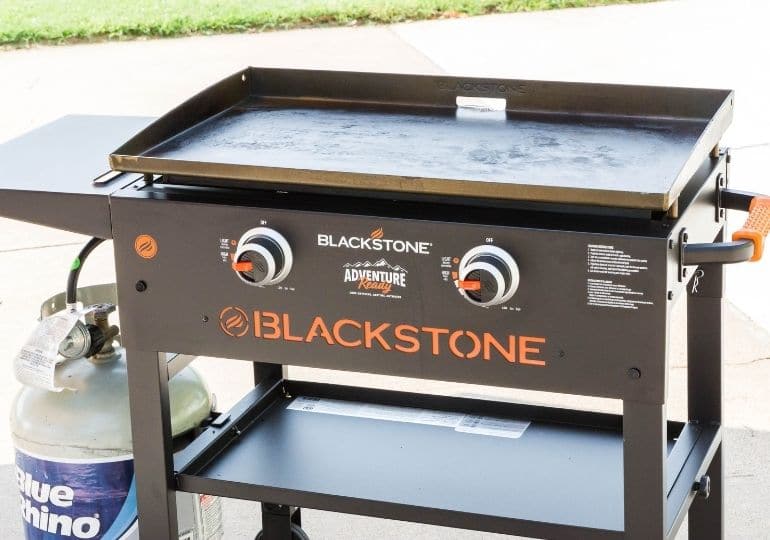How to Season a Blackstone Griddle is an essential process to ensure its longevity and optimal cooking performance. This simple yet crucial step involves treating the surface to create a non-stick coating and protect it from rust. Whether you’re a novice or an experienced chef, mastering the art of seasoning your griddle will significantly enhance your cooking experience.
Introduction How to Season a Blackstone Griddle

Before diving into the specifics, understanding the significance of seasoning lays the foundation. How to Season a Blackstone Griddle only prevents food from sticking but also provides a layer of protection against corrosion. It’s essentially establishing a natural non-stick surface on the griddle allowing for better cooking and easier cleanup.
Importance of Seasoning
Highlighting the importance of seasoning emphasizes its role in maintaining the griddle’s quality. Seasoning acts as a barrier against moisture, preventing rust and ensuring the longevity of the cooking surface. Furthermore, a properly seasoned griddle enhances the flavor of your food and promotes even cooking.
Preparing the Griddle for Seasoning
To initiate the seasoning process, it’s crucial to start with a clean griddle. Removing any residues or manufacturing oils ensures that the seasoning adheres effectively to the surface. Use warm, soapy water and a scrubbing pad to clean the griddle thoroughly. Rinse it off and let it dry completely.
Seasoning Process Step-by-Step
- Cleaning the Griddle: Remove any dust, debris, or factory residues from the griddle surface.
- Applying Oil: Apply a thin layer of cooking oil (such as flaxseed or vegetable oil) evenly across the griddle surface.
- Spreading and Heating: Spread the oil with a cloth or paper towel, ensuring complete coverage. Heat the griddle on medium-high heat until it begins to smoke.
- Cooling Down: Turn off the heat and allow the griddle to cool down naturally.
Tips for Maintaining a Seasoned Griddle
Maintaining the seasoning is as crucial as the initial seasoning process. Avoid using harsh detergents or abrasive materials that could strip off the seasoned layer. After each use, clean the griddle gently with a non-abrasive sponge and a mild dish soap. Reapply a thin layer of oil after cleaning to maintain the seasoning.
Common Mistakes to Avoid
Some common mistakes, such as using too much oil or seasoning at the wrong temperature, can affect the effectiveness of the seasoning process. Avoid these pitfalls to ensure a perfectly seasoned griddle.
Benefits of a Well-Seasoned Griddle
How to Season a Blackstone Griddle A well-seasoned griddle offers a range of benefits, from improved cooking performance to a better taste in your dishes. It provides a smooth cooking surface, prevents food from sticking, and imparts a unique flavor to your meals.
Seasoning the Blackstone Griddle
Choosing the Right Oil
Select a high-smoke-point oil such as flaxseed, vegetable, or grapeseed oil. These oils are ideal for seasoning as they create a durable non-stick surface.
Applying Oil on the Griddle
Apply a thin layer of oil across the griddle’s surface using a cloth or paper towel. Ensure the entire surface is coated evenly.
Spreading the Oil Evenly
Use the cloth to spread the oil evenly, ensuring no pools or thick spots.
Heating the Griddle Again
Heat the griddle for about 20-30 minutes until it starts to smoke. This process polymerizes the oil, creating a non-stick layer.
Conclusion
Mastering the art of seasoning your How to Season a Blackstone Griddle is a fundamental step toward elevating your cooking experience. With proper care and maintenance, a seasoned griddle will serve as your reliable cooking companion, ensuring delicious and hassle-free meals.
FAQs about Seasoning a Blackstone Griddle
How often should I season my griddle?
Can I use butter instead of oil for seasoning?
Does seasoning prevent rust completely?
Can I season my griddle indoors?
Is it normal for the griddle to smoke during seasoning?

